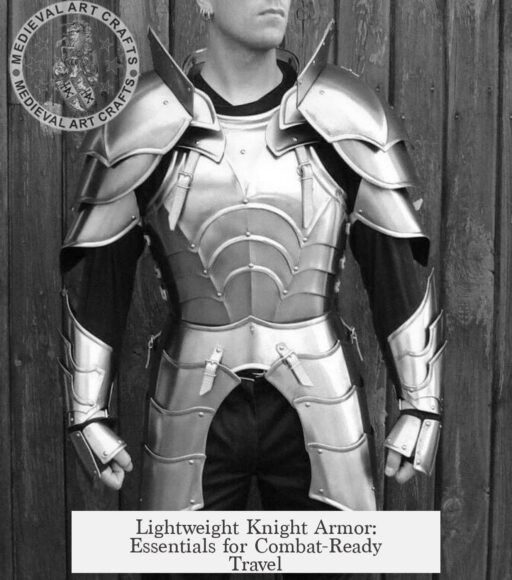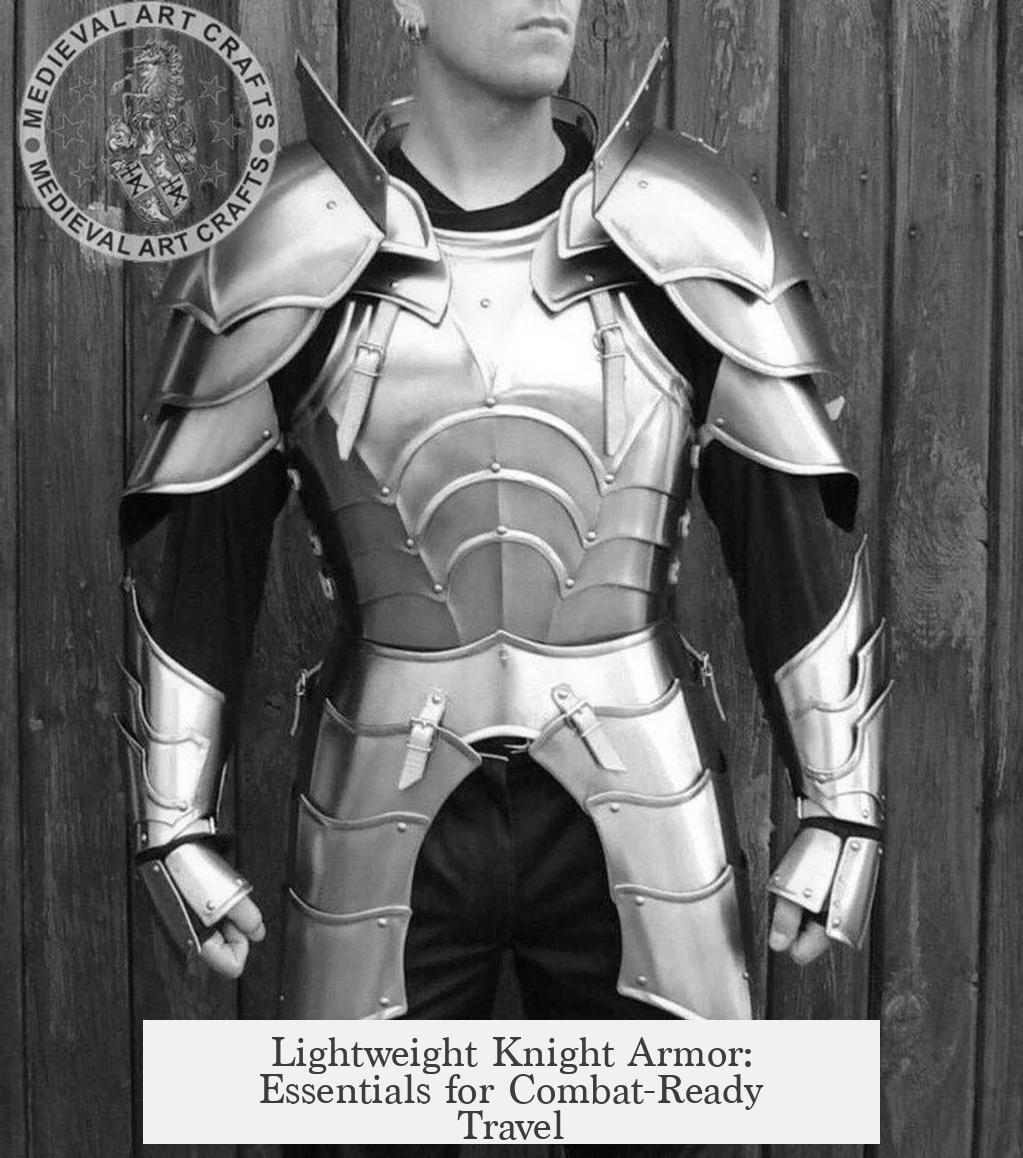A knight traveling light but eager to stay combat ready would wear a carefully selected subset of armor designed to balance protection, mobility, and comfort. This typically includes a padded gambeson or aketon worn beneath a mail shirt or layered with a brigandine, coat of plates, or a breastplate. He would don a bascinet helmet with an attached aventail for neck protection, though likely removing the visor to ease breathing and sight. Partial leg armor and gauntlets would be worn depending on the threat level, possibly carried separately and donned when needed. The sword stays at hand, with a lance and shield optional depending on the mission. Many heavier or more cumbersome parts, such as full plate armor and arm defenses, would be packed away.
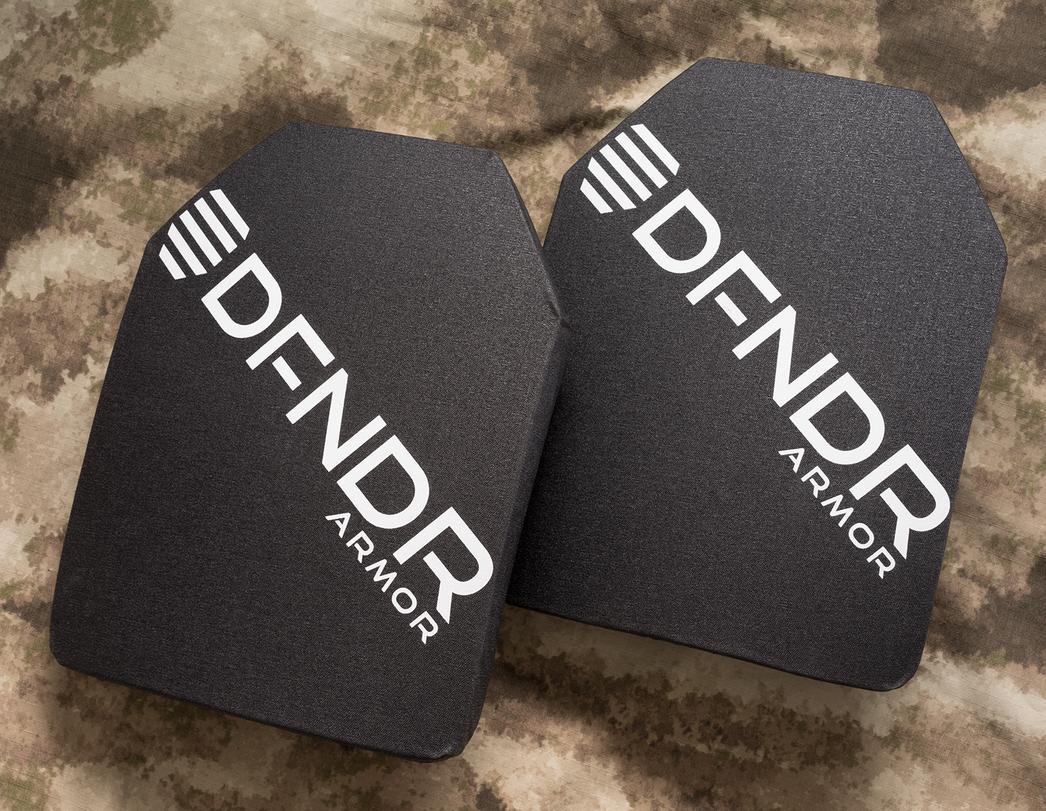
The absence of direct historical records specifically about knights’ travel armor requires reliance on related sources and analogies. Armor was modular by the 14th century. Knights adjusted their gear based on circumstance, much like craftsmen adjust their tools. This flexibility allowed knights to travel with lighter protection while maintaining readiness for a sudden fight.
Historical light cavalry provide informative models. English hobelars around 1335 wore padded coats, mail or plate armor, bascinets with aventails, and light weapons. French coutiliers in the mid-15th century similarly combined mail shirts or brigandines with helmets and light lances. Burgundian light cavalry and Spanish jinetes layered mail with breastplates and carried light weapons and small shields. These examples illustrate typical light, combat-ready configurations optimized for travel and skirmishing rather than full-field battle.
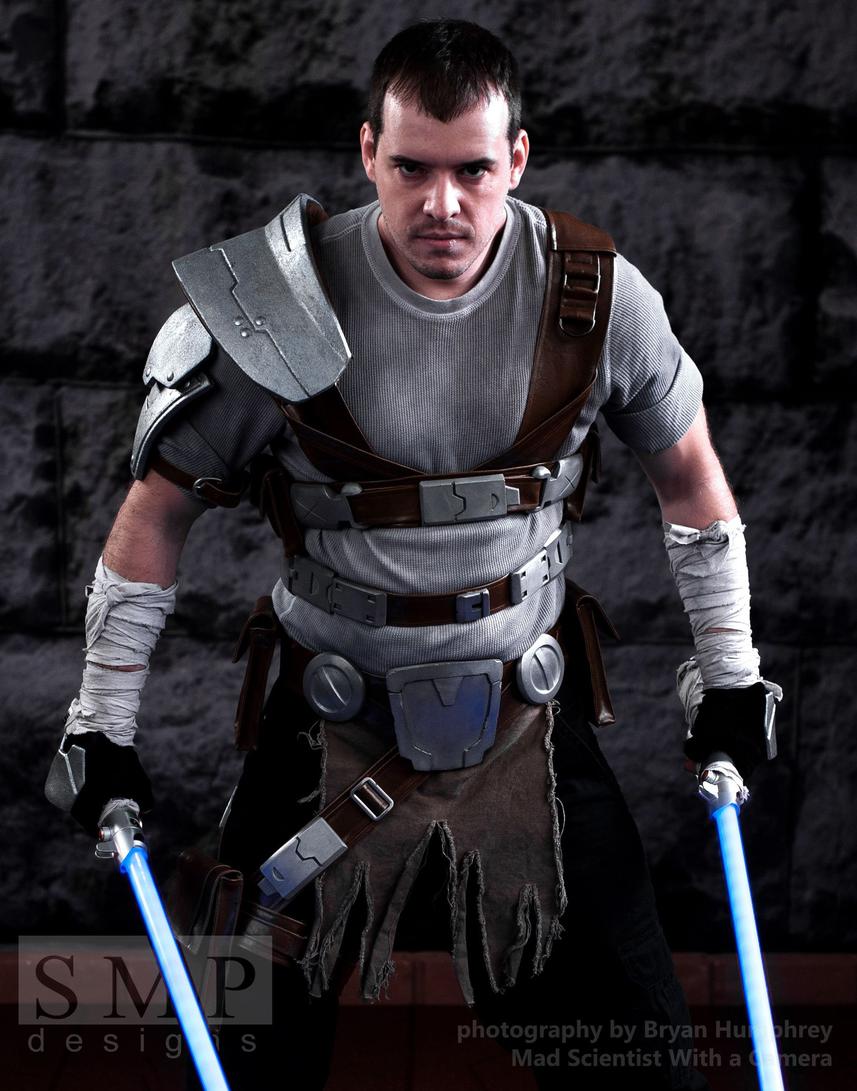
Travel conditions heavily influenced armor choices. Wearing full armor constantly proved uncomfortable and restricted mobility and dexterity. Helmets and gauntlets, though protective, could quickly cause fatigue and reduce skill in handling weapons or reins. Knights likely delayed putting on such gear until a genuine threat appeared. The visor that offered head protection could be detached during travel to improve vision and airflow.
Knights also prioritized inconspicuousness and practicality. Flaunting full armor or expensive gear while traveling could attract unwanted attention or become a burden. Concealment under normal clothing or travel jackets was common. For example, a cervelliere (a small iron skullcap) might be worn discreetly under a hood or hat. A mail shirt could be hidden beneath a gambeson or sturdy riding attire. Sturdier gloves and thick riding trousers served as light protection while enhancing comfort for long journeys.

The type of horse used also reflected travel versus combat readiness. Warhorses were expensive and specialized. Knights often traveled on less costly riding horses, reserving their charger for actual battle. This choice reduced travel costs and logistical difficulty without compromising the ability to fight when necessary.
| Armor Component | Description & Usage |
|---|---|
| Gambeson / Aketon | Padded jacket worn under or instead of mail for shock absorption and protection; comfortable for travel. |
| Mail Shirt / Brigandine / Coat of Plates | Primary light to medium defense layers; flexible and lighter than full plate; worn over gambeson. |
| Bascinet Helmet + Aventail | Head and neck protection; visor often removed to improve comfort and vision during travel. |
| Gauntlets | Hand protection worn selectively; avoided when riding long distances for dexterity and comfort. |
| Leg Armor (Partial) | Some protection on shins or knees; dependent on threat assessment and travel conditions. |
| Sword and Lance (Optional) | Primary and secondary weapons kept ready; lance may be carried if anticipating combat. |
| Shield | Sometimes carried, but often left behind to reduce bulk and improve mobility. |
This balance between protection and practicality typifies mid-14th century knights adapting to travel challenges. Early in the century, mail dominated their armor. Later, plate additions grew common but were selectively removed for lighter sets. The knight’s goal remained to be ready for conflict while avoiding exhaustion and vulnerability from cumbersome gear.
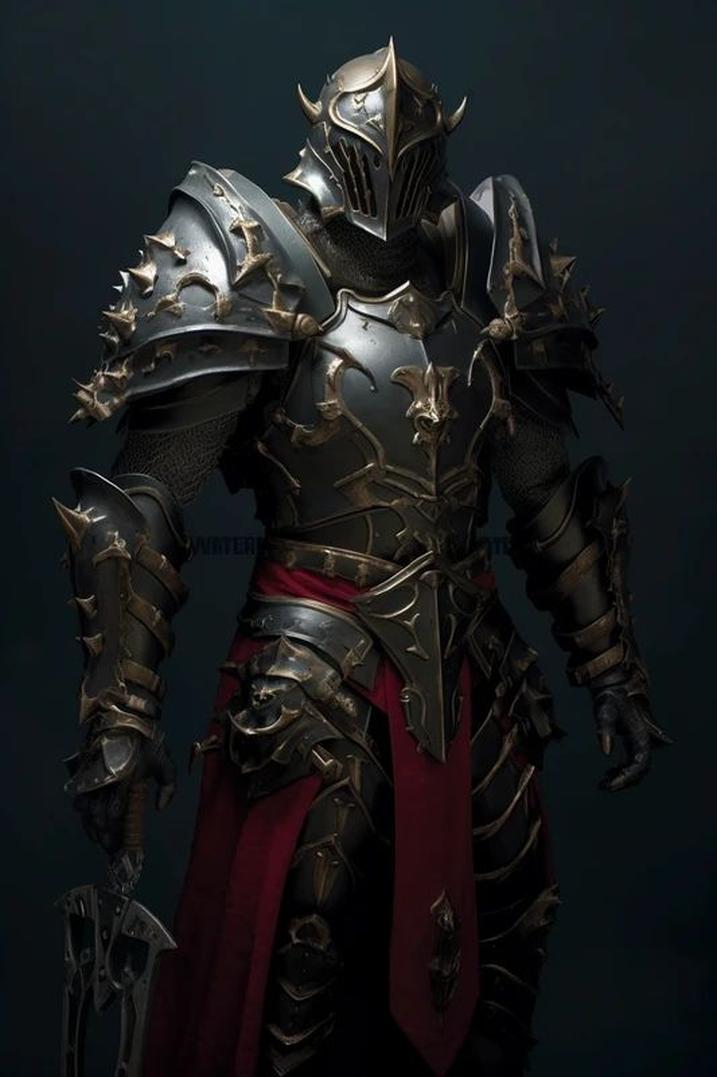
- Knights wore a padded gambeson with mail or partial plate for travel.
- Bascinet helmets were used but visors removed to boost comfort and visibility.
- Gauntlets and heavier limb armor were applied only when necessary.
- Weapons like the sword stayed accessible; lances and shields might be carried or left behind.
- Armor pieces were modular; non-essential parts stayed packed during long journeys.
- Travel horses differed from warhorses; warhorses saved for combat readiness.
- Concealment and comfort were crucial; armor was often worn discreetly to avoid attention.
What Would a Knight Wear If He Were Trying to Travel Light, But Wanted to Be Combat Ready?
Imagine a knight, aspiring to hit the road without the clanking burden of full plate armor, yet still ready to face danger head-on. What does he wear to stay live and kicking without dying of exhaustion? That knight would favor a nimble, modular armor setup focusing on essential protection, comfort, and practical readiness. This means light but effective layers melding mobility with defense.

But wait, are we making this up? Nope. Though historical sources are surprisingly silent about knights’ “traveling armor,” piecing together clues from military ordinances, light cavalry examples, and armor evolution paints a clear picture. Ready to dive into this blend of warrior pragmatism and medieval style? Grab your metaphorical lance and saddle up.
Lack of Direct Historical Records: The Quiet Armor Chronicles
First, historians must confess that direct accounts of knights’ armor choices while traveling are rare. Armor seen in battle and tournaments steals the spotlight, but what a knight wore on the road? Not so much.
Why the silence? Probably because scribes preferred chronicling epic battles, not what a knight wore for comfort or convenience. Plus, armor was highly personal, changing by preference, role, and threat. So, no medieval Yelp reviews describe “best travel armor for knights.”
Still, surviving military ordinances and the equipment lists of light cavalry units from England, France, Burgundy, and Spain offer compelling parallels. These examples serve as historical “benchmarks” for what travel-ready, combat-capable knights likely wore.
Armor as a Toolbox: Modular and Adjustable
Knights didn’t always wear the full parade of gleaming metals. Armor was a tool. Like a Swiss Army knife of protection, its pieces could be swapped, shed, or strapped on to fit the mission.
By the 15th and 16th centuries, specialized armor sets included interchangeable parts for different combat scenarios—whether jousting, foot combat, or light cavalry skirmishing. Though our knight here is earlier, the trend toward modularity was already emerging in the 14th century.
Travel Light, But Ready: Armor Choices for Comfort and Combat
Let’s get practical. Wearing a full iron-cast suit all day riding dusty roads? No thanks. Our knight wisely pares down to essentials: a padded jacket (gambeson or aketon), a mail shirt or light torso armor such as a coat of plates or brigandine, a bascinet helmet (sometimes minus its heavy visor), gauntlets worn only when danger looms, and selective leg armor.
This configuration balances protection with mobility and comfort. The gambeson cushions blows and is comfy under metal. The mail or plates guard vital areas without the weight of a full suit. The helmet’s aventail protects the neck but removing the visor improves airflow and visibility when threats seem distant.
Looking to Historical Light Cavalry for Inspiration
Take the hobelar (English, circa 1335). This light horseman carried a coat of plates or aketon, bascinet helmet with aventail, sword, dagger, and gauntlets. The hobelar’s horse was unbarded, reflecting an emphasis on speed over showy war readiness.
French coutiliers and late 15th-century Burgundian light cavalry bore similar gear: mail or brigandine, helmet, sword, light lance or javelin, and minimal leg armor. Spanish jinetes favored layered mail with breastplates, helmets, and small shields, wielding swords and javelins emphasizing agility.
Our knight traveling light would borrow these principles: light but layered protection, weapons at the ready, and optimized for swift defense or quick offense.
Specific Armor Pieces and Their Uses
| Armor Piece | Traveling Use | Combat Readiness |
|---|---|---|
| Gambeson / Aketon | Comfortable padded layer, worn all day under clothing. | Cushions impacts, base for adding metal armor. |
| Mail Shirt or Brigandine / Coat of Plates | Light torso protection, easy to don and left on most travel. | Key defense for vital areas against cuts and thrusts. |
| Bascinet Helmet with Aventail | Helmet worn during travel but visor often removed for airflow. | Protects head and neck, visor added if combat imminent. |
| Gauntlets | Often kept off to retain dexterity and comfort. | Worn when threat is high, guards hands during combat. |
| Partial Leg Armor | Light coverage improves mobility; avoids full plate leg discomfort. | Protects shins and thighs against slashes and arrows. |
| Arm Armor (Vambraces) | Usually packed away to avoid bulk. | Added before battle to protect forearms. |
Weapons and Shields: Always Ready, But Not Always Hindered
The knight keeps his sword sharp and accessible—no knight travels without his signature blade. A lance might accompany him if his journey hints at possible cavalry combat. Shields, if owned, are optional. They add bulk and draw attention, so many traveling knights might stash shields away unless combat expected.
Comfort and Practicality: Sometimes Armor Takes a Break
Full helmets are hot, heavy, and can quickly turn a peaceful ride into a sweaty misery contest. Gauntlets hamper fine hand movements, which are vital for feeding a horse or handling reins.
So, our thoughtful knight reserves those heavier armor bits for when he truly needs them—at camp or on the battlefield. Usually, he rides with the visor off, gauntlets off, and minimal restrictive gear to stay fresh and alert.
Riding Horses vs. Warhorses: Choosing the Right Steed
Did you think knights lumbered about on their prized destriers at all times? Nope. Warhorses cost a small fortune and require special handling. When traveling light, knights mount ordinary riding horses—hardy, reliable, and less targeted by bandits hungry for expensive war horses.
Warhorses wait patiently in a secure location until the knight senses approaching trouble, at which point the full armor and warhorse come into play.
Stay Under the Radar: Avoiding Trouble During Travel
Traveling through potentially hostile lands meant staying low-key. Being armored head-to-toe screams: “I’m wealthy and armed!” That attracts thieves and troublemakers.
Our knight understands that subtlety can be life-saving. Lightweight protective gear, like a cervelliere (a small iron cap) hidden under a hat or hood, mail shirts disguised by heavier coats, and padded gambesons that look like thick jackets allow blending in with common folk or soldiers without flaunting riches.
This stealthy approach complements the goal to avoid combat unless necessary while still being prepared.
Armor’s Evolution: Context Matters
The 14th century witnessed tremendous changes in armor technology. Early in the century, mail predominated; by its end, partial plate armor began appearing in force.
If your knight hails from around 1310, his light traveling armor looks quite similar to his battle attire, mostly mail and padded cloth. Later, he can experiment with lighter plate pieces replacing some mail sections—granting improved protection while keeping weight in check.
So, What’s the Final Travel-Ready Knight Ensemble?
- Base Layer: Gambeson or aketon for padding and comfort.
- Torso Protection: Mail shirt or brigandine/coat of plates or breastplate worn over padding.
- Helmet: Bascinet with aventail for neck protection; visor detached to breathe easy unless combat starts.
- Hands: Gauntlets packed, worn selectively.
- Leg Armor: Partial coverage for knees and shins.
- Weapons: Sword always at hand, lance if suitable, shield optional.
- Concealed Armor: Cervelliere under hats or hoods for discreet head protection.
- Horse: Typical riding horse for travel, saving warhorse for battle.
This travel armor configuration gives a knight a practical edge—protections where it matters, comfort where it counts, and speed to stay alive and undetected.
Thinking Like a Knight: Could You Travel Like This?
Next time you pack for a trip, imagine all that metal. Would you carry your full battle gear like a medieval knight? Or opt for a lightweight, smart approach with modular armor pieces for unexpected fights?
The knight’s balance of readiness and lightness is still relevant today. Whether it’s choosing the right hiking gear or prepping for urban adventure, less can sometimes be more.
“Armor was not just about protection, but about flexibility to suit the journey.”
So here’s to the adaptable knight—traveling light, riding comfortable, ready to draw his sword at a moment’s notice. Sounds like a reasonable plan for medieval survival, huh?
